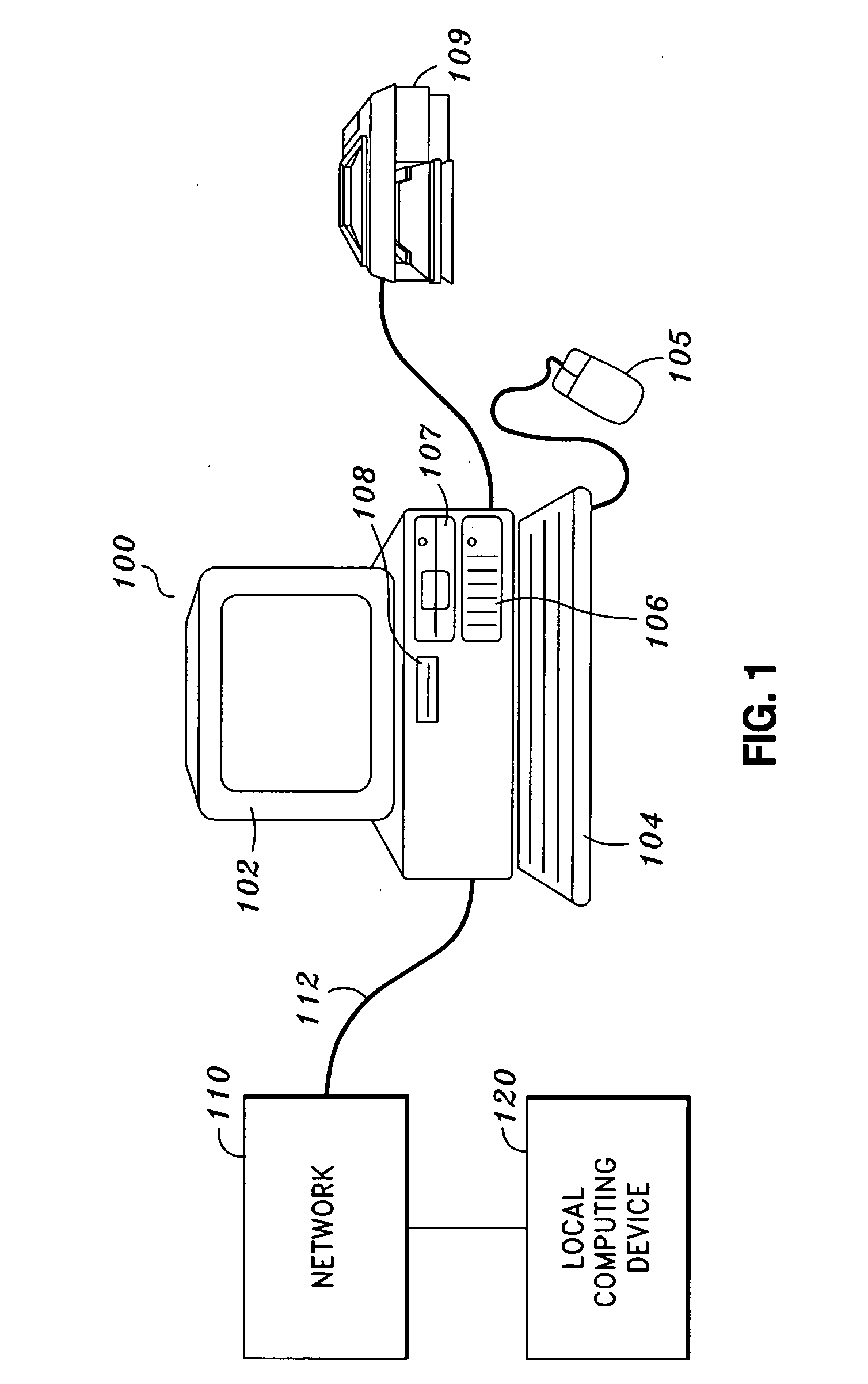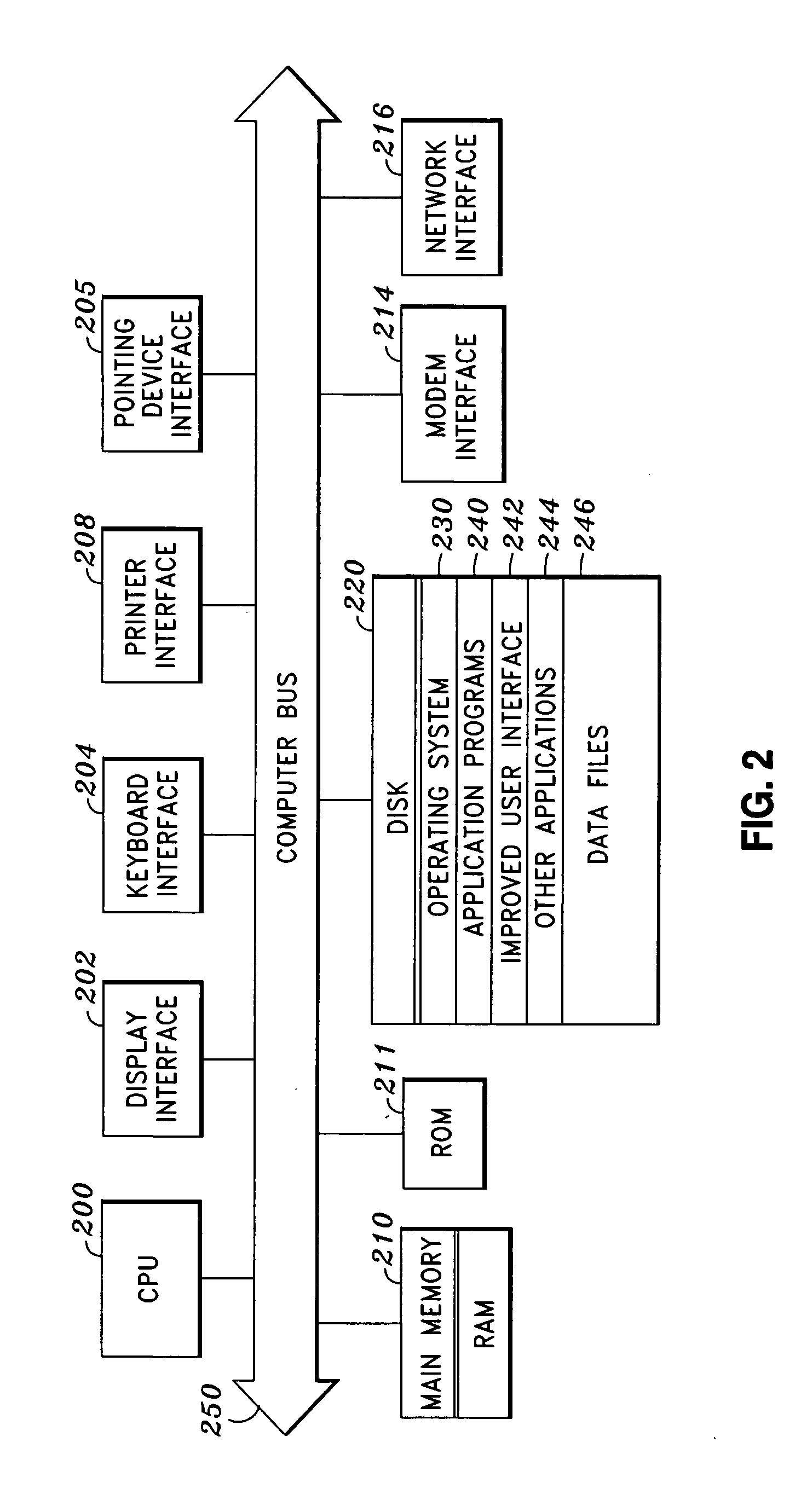User interface for remote computing devices
a remote computing and user interface technology, applied in computing, digital computers, instruments, etc., can solve the problems of user adding, editing or deleting, high total cost of ownership, and affecting the use of this type of device in a large network
- Summary
- Abstract
- Description
- Claims
- Application Information
AI Technical Summary
Benefits of technology
Problems solved by technology
Method used
Image
Examples
Embodiment Construction
[0036]FIG. 1 is a view showing the exterior appearance of one embodiment of the invention. Computer 100 is a remote computing device, such as a thin client, where computer 100 includes computer-readable storage medium, such as fixed disk drive 106, for the management of a connection between a local computing device and a remote computing device using an improved user interface. As shown in FIG. 1, the hardware environment can include computer 100, display monitor 102 for displaying text and images to a user, keyboard 104 for entering text data and user commands into computer 100, mouse 105 for pointing, selecting and manipulating objects displayed on display monitor 102, fixed disk drive 106, removable disk drive 107, tape drive 108, hardcopy output device 109, computer network 110, computer network connection 112, and local computing device 120.
[0037] Computer 100 can be a desktop PC, a thin client, a laptop, a workstation, a midrange computer, a mainframe, a cash register, an aut...
PUM
 Login to View More
Login to View More Abstract
Description
Claims
Application Information
 Login to View More
Login to View More - R&D
- Intellectual Property
- Life Sciences
- Materials
- Tech Scout
- Unparalleled Data Quality
- Higher Quality Content
- 60% Fewer Hallucinations
Browse by: Latest US Patents, China's latest patents, Technical Efficacy Thesaurus, Application Domain, Technology Topic, Popular Technical Reports.
© 2025 PatSnap. All rights reserved.Legal|Privacy policy|Modern Slavery Act Transparency Statement|Sitemap|About US| Contact US: help@patsnap.com



